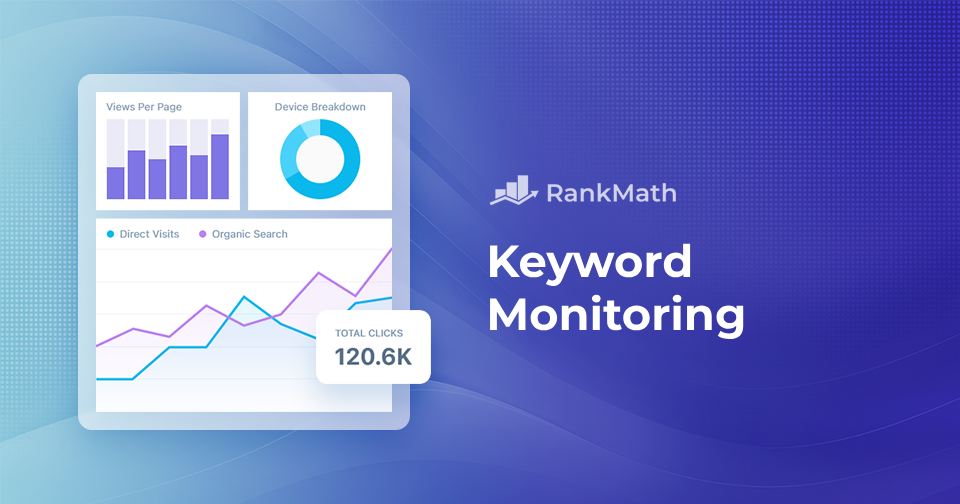If you’re serious about growing your business online, you probably already know how important SEO is. But one area that often gets overlooked, yet plays a huge role in your success, is keyword monitoring.
Also known as keyword tracking or rank tracking, this practice goes beyond being just a buzzword. It provides actionable insights that help you refine your marketing strategy, optimize content, and stay ahead of the competition.
In this post, we’ll break down what keyword monitoring is, why it’s important, and how you can do it effectively to boost your SEO efforts.

So, without any further ado, let’s get started.
Table Of Contents
1 What is Keyword Monitoring?
Keyword monitoring is the process of systematically tracking how your chosen keywords perform in search engine results pages (SERPs) over time.
With 92% of online experiences beginning with a search engine, monitoring keywords is essential for improving visibility and aligning your content with user intent.
This practice is a core part of any SEO strategy, helping you evaluate the effectiveness of your target keywords and understand their impact on website traffic and search rankings.
For example, if you run a software company that offers project management tools, you can track keywords like best project management software or task management tools.
By monitoring how these keywords rank and change over time, you can discover opportunities to optimize your content, boost your rankings, and attract more organic traffic.
2 Importance of Keyword Monitoring
Understanding why keyword monitoring matters is essential for developing an effective and sustainable SEO strategy. Here are some of the key reasons it plays an important role.
2.1 Track SEO Success
Keyword monitoring helps you evaluate the success of your SEO efforts by tracking keyword rankings, analyzing performance trends, and measuring changes in traffic and conversions.
Ranking well—especially in the top positions—for a broad set of relevant keywords can significantly increase your organic traffic. That’s why keyword rankings are a key performance indicator (KPI) in most SEO strategies.
2.2 Gain Competitive Advantage
Monitoring keywords also gives you visibility into how your competitors are performing for similar search terms. This allows you to:
- Discover keyword gaps.
- Benchmark your progress.
- Find opportunities to outperform competitors.
2.3 Optimize Content Effectively
By identifying which keywords are bringing the most traffic, you can strategically optimize existing content or create new pieces that target high-performing keywords.
This ensures you’re aligning your content with actual user intent and search demand.
2.4 ROI Tracking
Keyword monitoring also helps assess the return on investment (ROI) from your SEO campaigns. By analyzing keyword ranking trends alongside traffic and conversion data, you can:
- See which strategies are working.
- Make data-driven adjustments.
- Allocate your SEO budget more efficiently.
3 How to Monitor Keywords for SEO
Let us now discuss how to monitor keywords for SEO.
3.1 Manually Track Keywords
If you’ve ever tried checking your keyword rankings manually, you know it’s not fun—it’s slow, repetitive, and honestly, kind of frustrating.
Find Your Rankings
Most people start by Googling their target keyword and scanning the results to find their site. Simple, right?
Not quite.
Google customizes results based on your browsing history, location, and device. So what you see isn’t necessarily what others see, which makes this method a bit unreliable.

To get a cleaner view, you’d need to:
- Open an Incognito or Private Browsing window
- Search for your keyword again
- Scroll through the results, sometimes page after page, just to find your site
Still, the results can vary depending on your location or device, so it’s far from perfect.
Use Free Tools (With Limitations)
There are free rank checker tools like:
- KeywordTools.org – Basic checker, but often misses things like featured snippets or “People Also Ask” boxes.
- Ahrefs’ Free Keyword Rank Checker – It shows ranking position, traffic estimates, backlink data, and even includes rich snippets. But again, you’re limited to one keyword at a time.
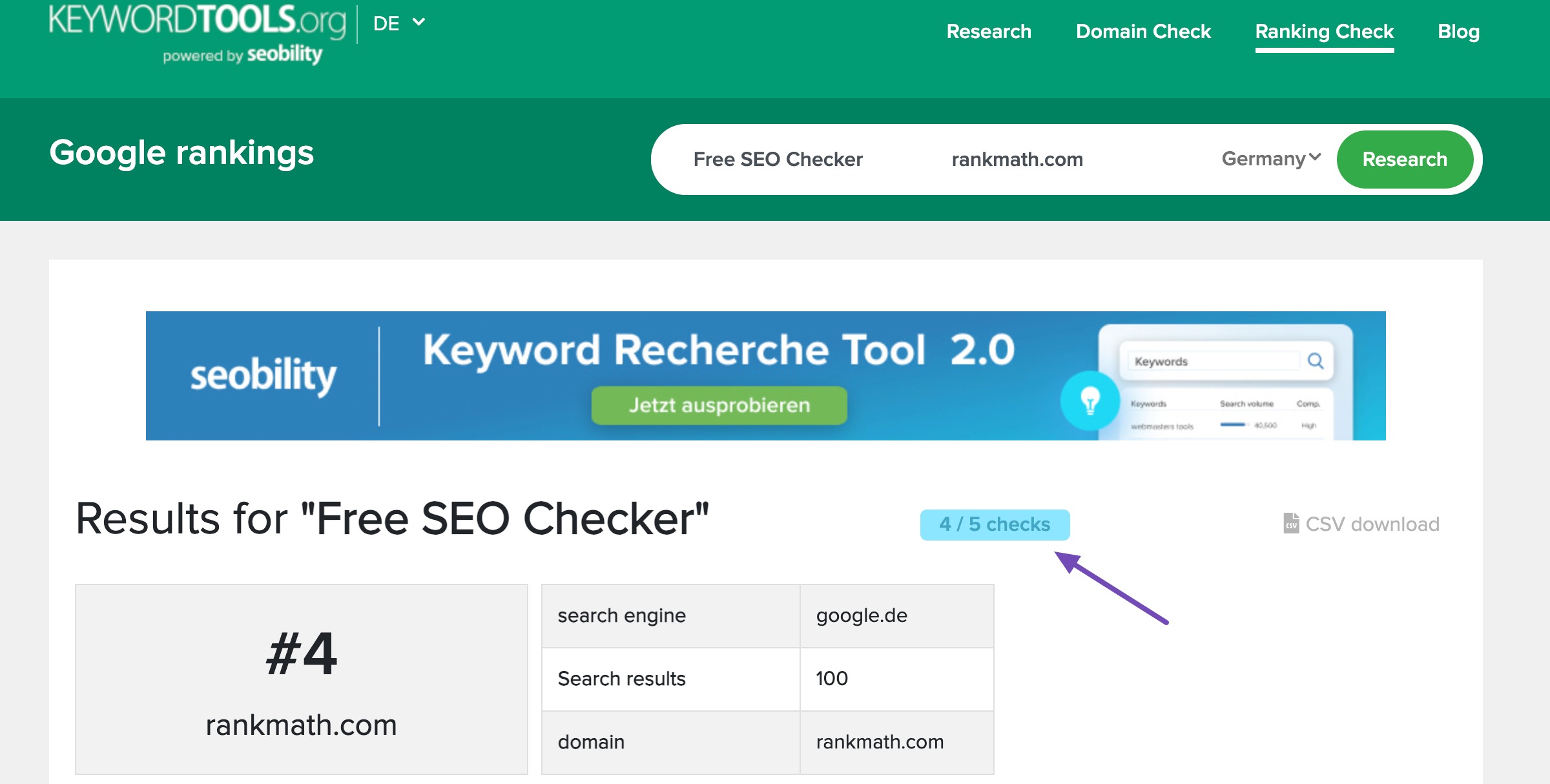
Many of these free tools have daily limits—sometimes just 5 keyword checks per day. That’s a major drawback if you’re tracking dozens or hundreds of keywords.
Organize the Data Manually
Once you collect the data, now comes the main part:
- Copy and paste your results into a spreadsheet
- Use Excel or Google Sheets to clean it up
- Maybe transpose the rows and columns to make it readable
- Do this every single day to monitor changes over time
And remember, that’s just one keyword.
Now imagine doing this for 50, 100, or even 200 keywords. You can easily spend hours on a task that should take only minutes.
There’s a better way…
You can use tools like Google Search Console or Rank Math.
Let’s discuss how these tools help you effortlessly monitor your keyword rankings.
3.2 Using Google Search Console
One of the most effective ways to monitor keyword performance is by using Google Search Console (GSC). It provides reliable, first-party data directly from Google, helping you track your website’s ranking in search results.
After logging in to your Google Search Console account, navigate to the Performance section. This is where you’ll find data on your site’s impressions, clicks, click-through rate (CTR), and average position.
Ensure the Average Position metric is selected in the report filters. This allows you to view where your keywords rank in the search results.
For a deeper analysis, you can click on the PAGES tab to view data specific to individual pages.
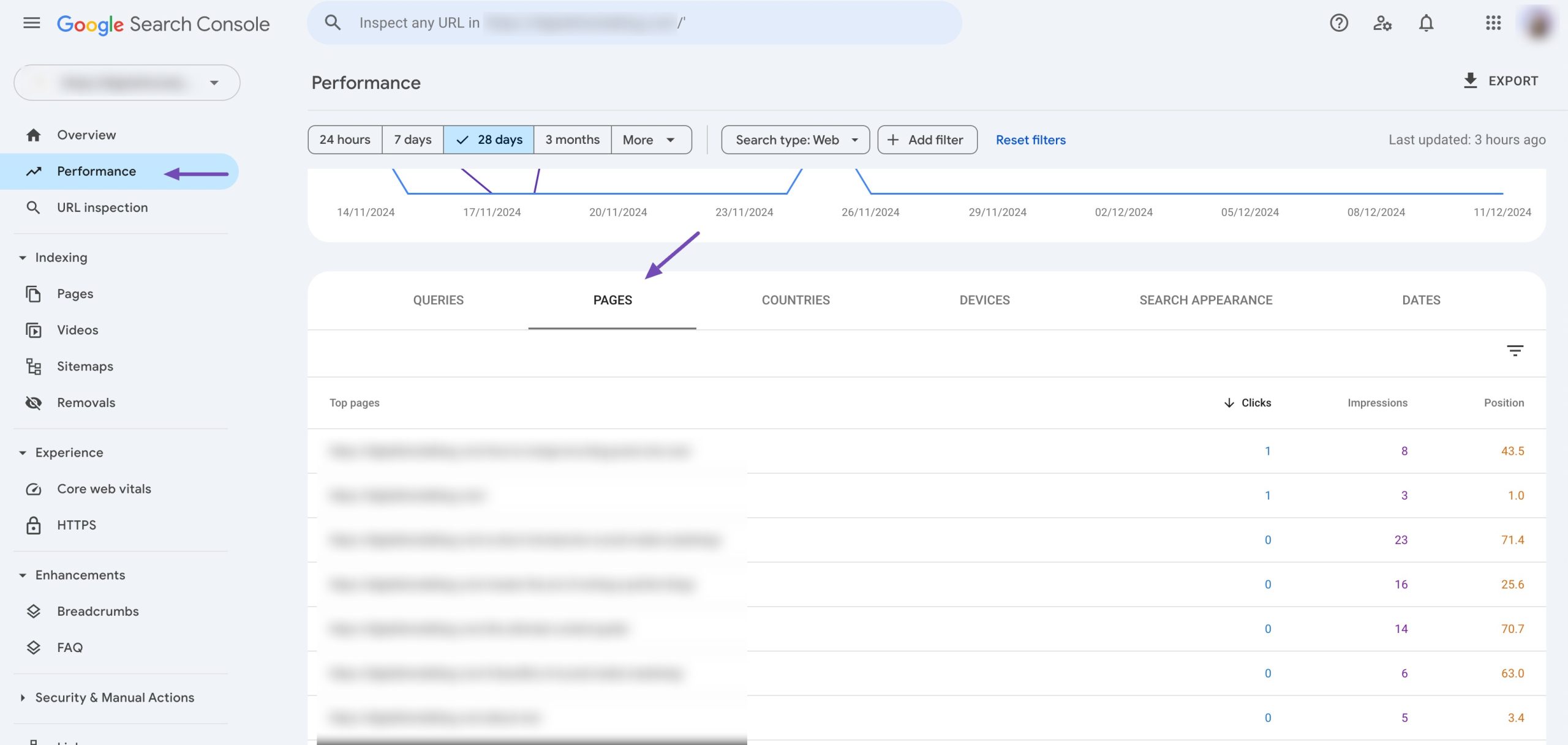
If you want to analyze the performance of an important page, click on the page to see the keywords it ranks for. From there, expand the queries section to get detailed insights.
For example, if you want to track the rankings of a particular keyword important to your business, click on that keyword. You will then see a graph showing its past rankings along with relevant data.
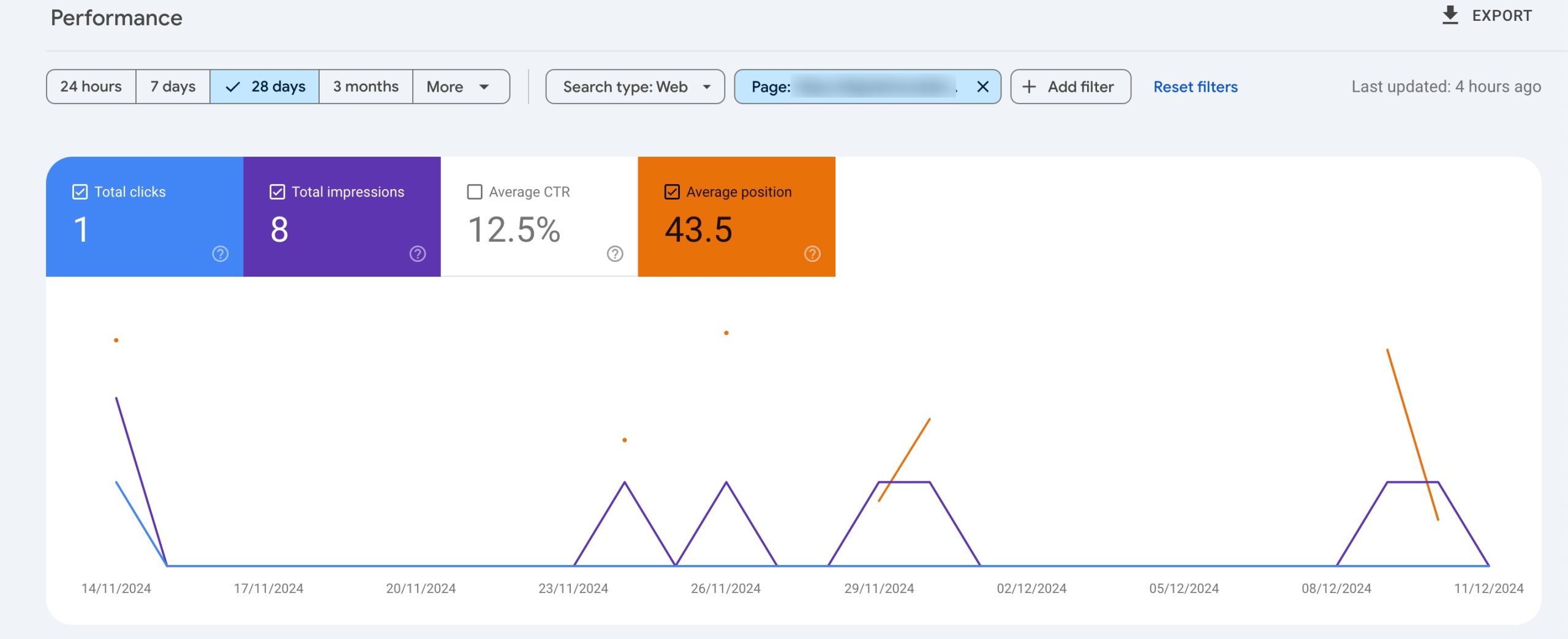
While Google Search Console provides accurate and trustworthy keyword data, it can be time-consuming to sift through if you’re tracking multiple pages or a large set of keywords.
In such cases, you may consider supplementing Google Search Console with third-party tools like Rank Math, Ahrefs, or Semrush for a more streamlined experience.
3.3 Keyword Monitoring Using Rank Math Analytics
Rank Math makes keyword monitoring simple by bringing all your SEO data into one easy-to-navigate dashboard.
First, install and activate the Rank Math SEO plugin from the WordPress plugin directory. Refer to our dedicated tutorial on installing and activating Rank Math on your website.
Once the plugin is installed and activated, navigate to Rank Math SEO → General Settings → Analytics.
Connect your website to Google Analytics and Google Search Console to grant Rank Math access to important data related to your website’s traffic and search performance.
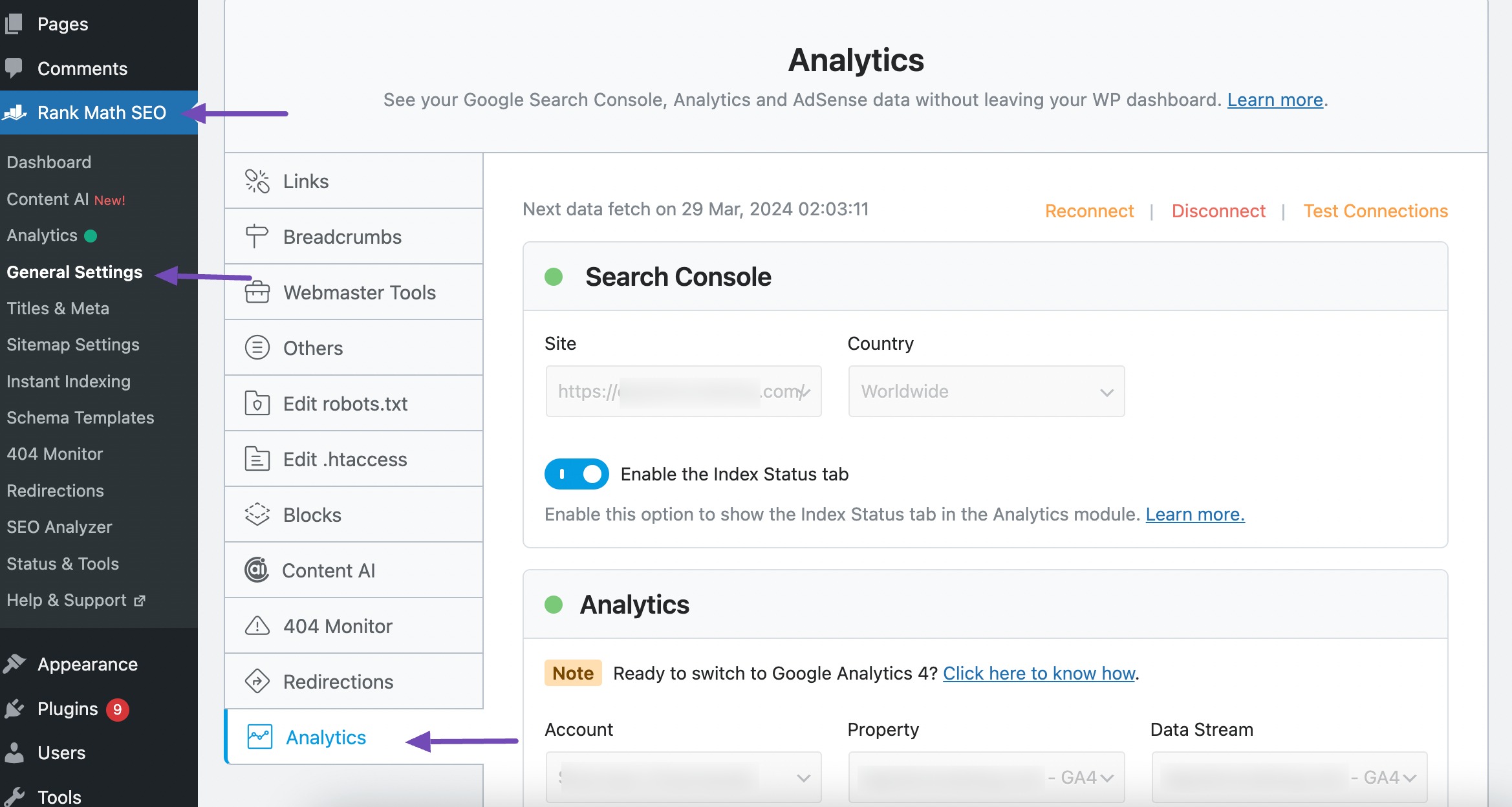
Refer to our tutorial to connect your Google account with Rank Math.
After connecting your accounts, keyword monitoring becomes effortless.
Rather than manually sorting and grouping data in Google Search Console, fetch the information by navigating to Rank Math SEO → Analytics → SEO Performance tab. You’ll see a comprehensive overview of your keywords and their rankings.
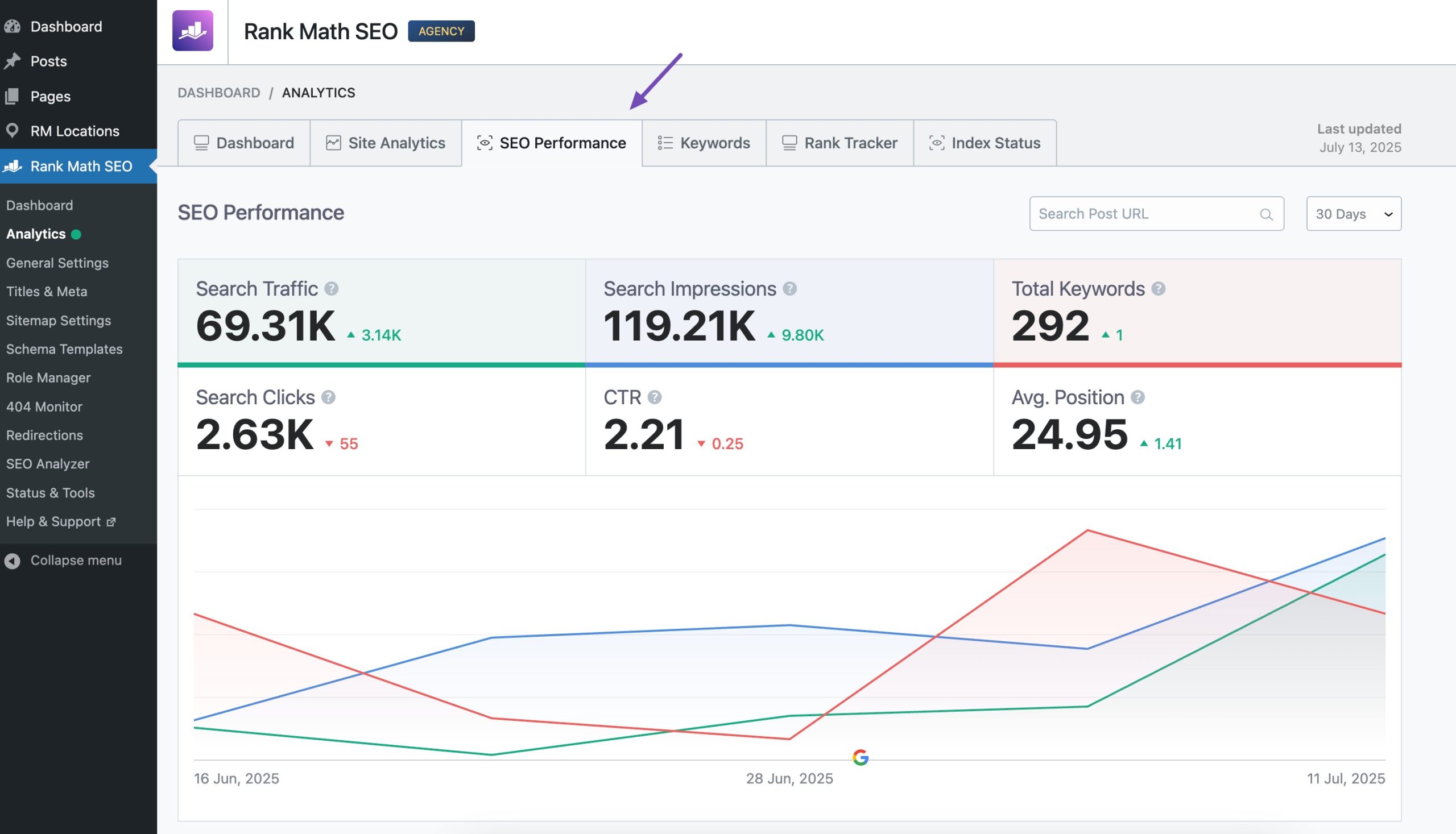
Within the Keyword Report Overview, quickly identify your top winning and losing keywords based on ranking performance over a selected timeframe.
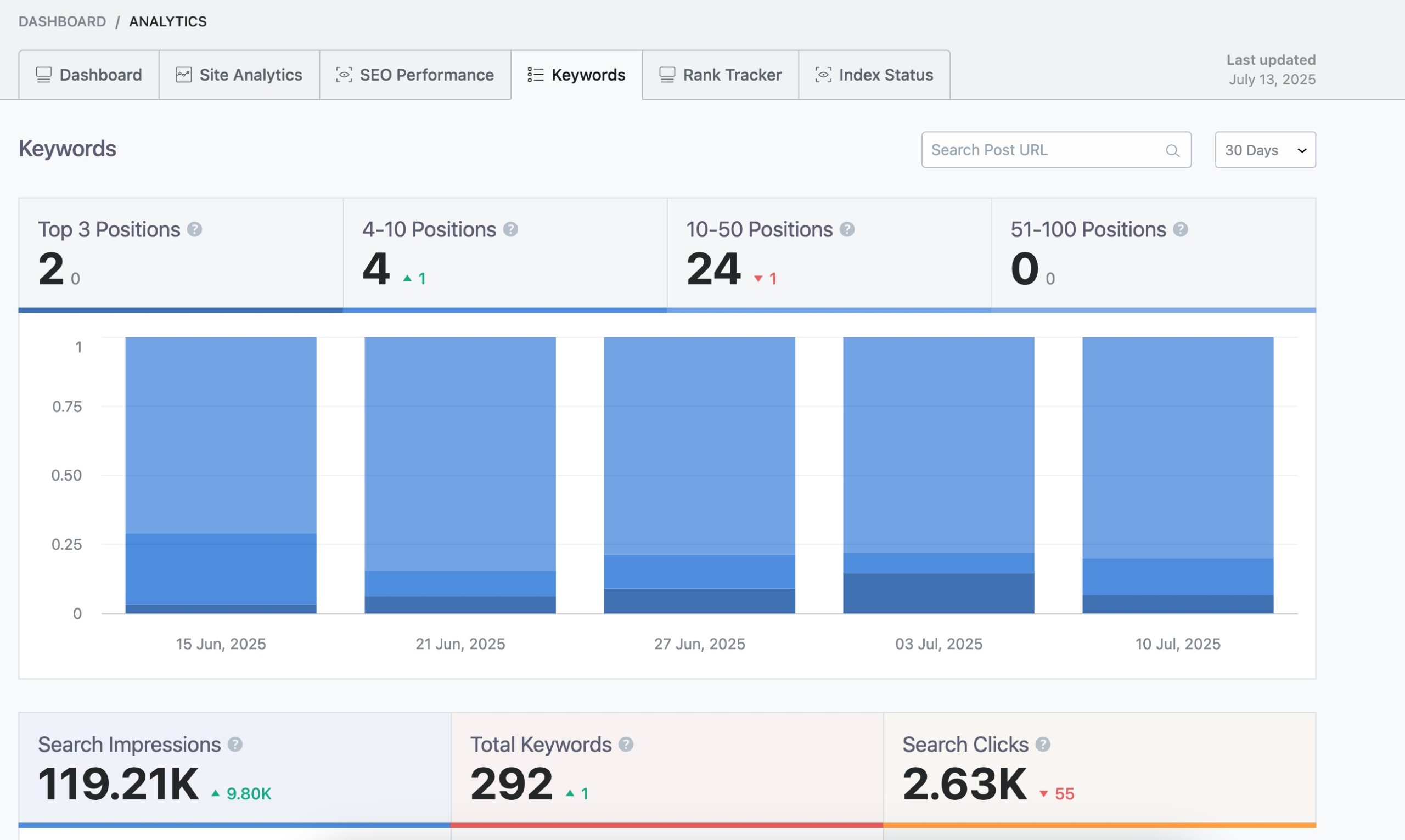
The bar graphs in the Keyword Positions report visually represent your posts’ rankings. By default, it showcases the number of posts occupying the top 3 positions, those within positions 4-10, and those ranging from 10 to 50.
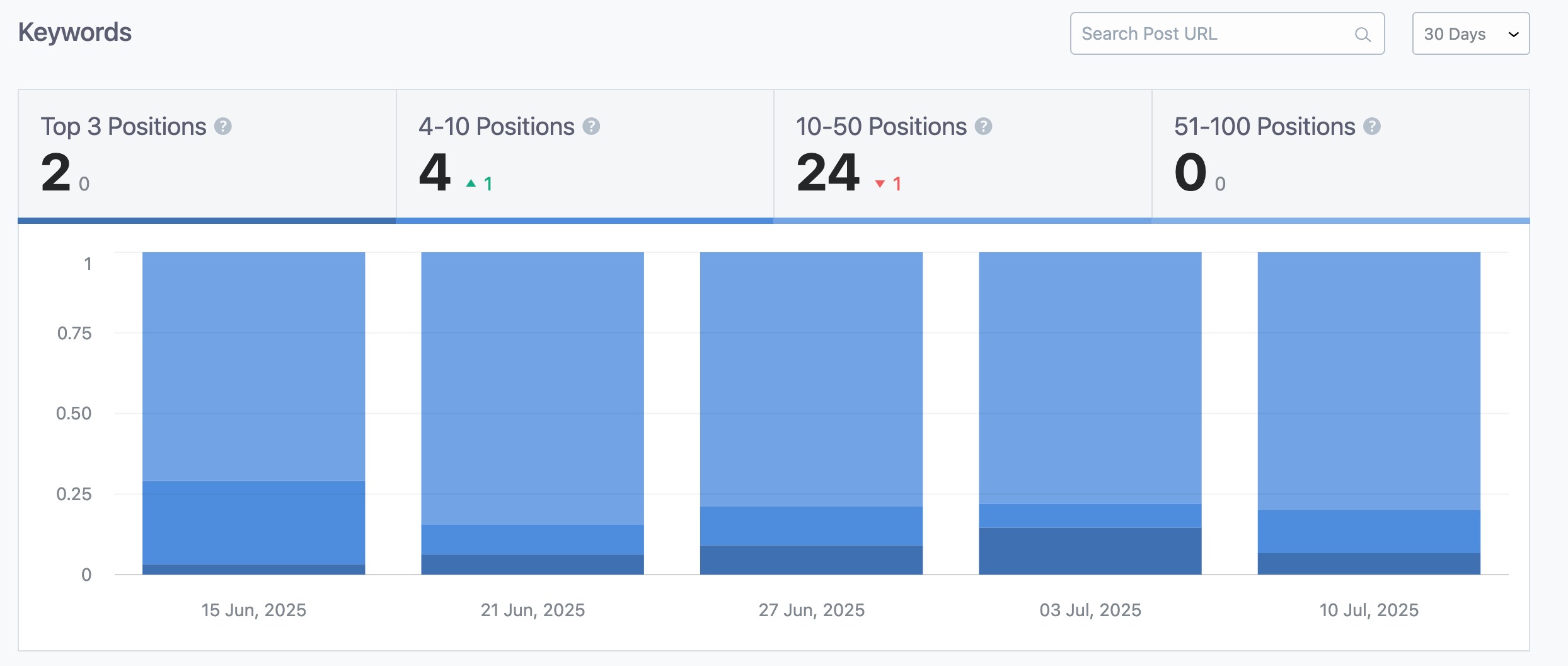
Rank Math’s Top 5 Winning and Losing Posts feature identifies posts with significant ranking improvements or declines over a specified period.
Rank Math eliminates the need to manually dig through Google Search Console data by giving you powerful keyword tracking directly in your WordPress dashboard. Use the insights to double down on what’s working—and fix what’s not.
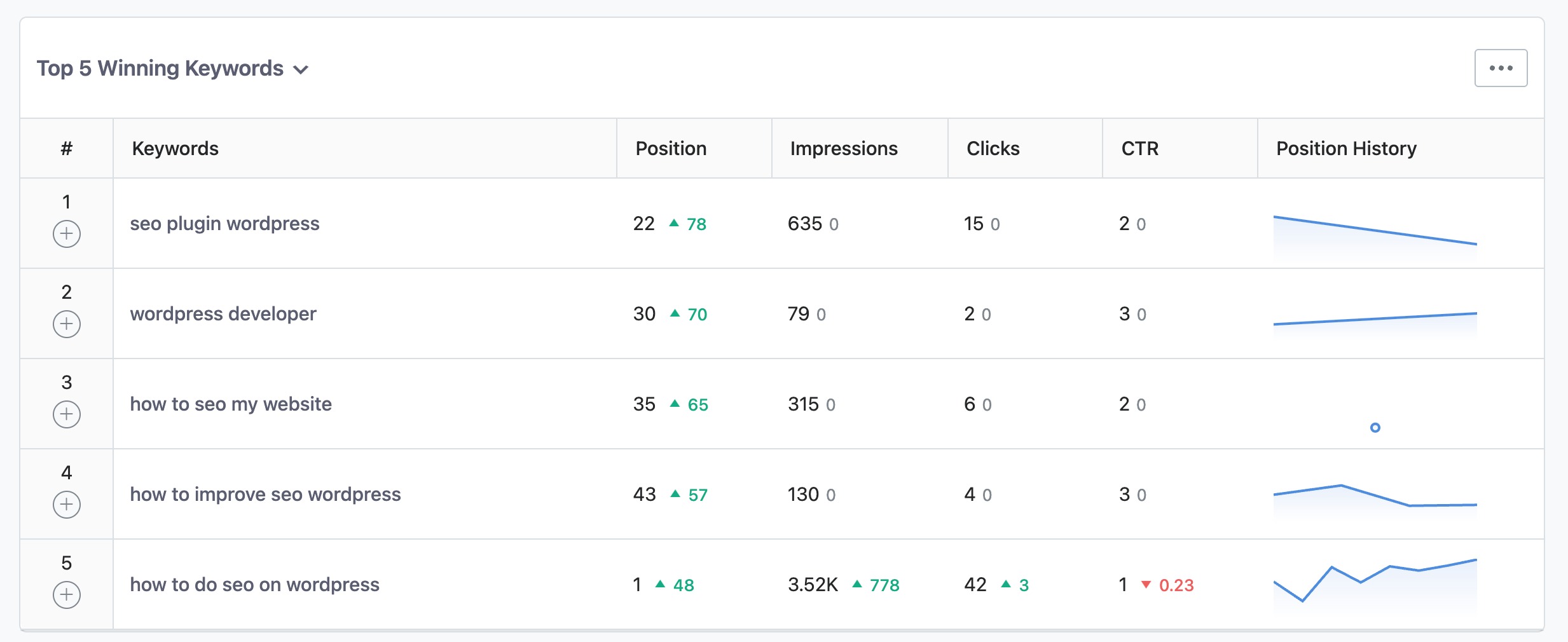
3.4 Keyword Monitoring Using Rank Tracker
With Rank Math PRO’s Rank Tracker, you can easily monitor the performance of specific keywords over time.
To get started, navigate to Rank Math SEO → Analytics → Rank Tracker, as shown below.
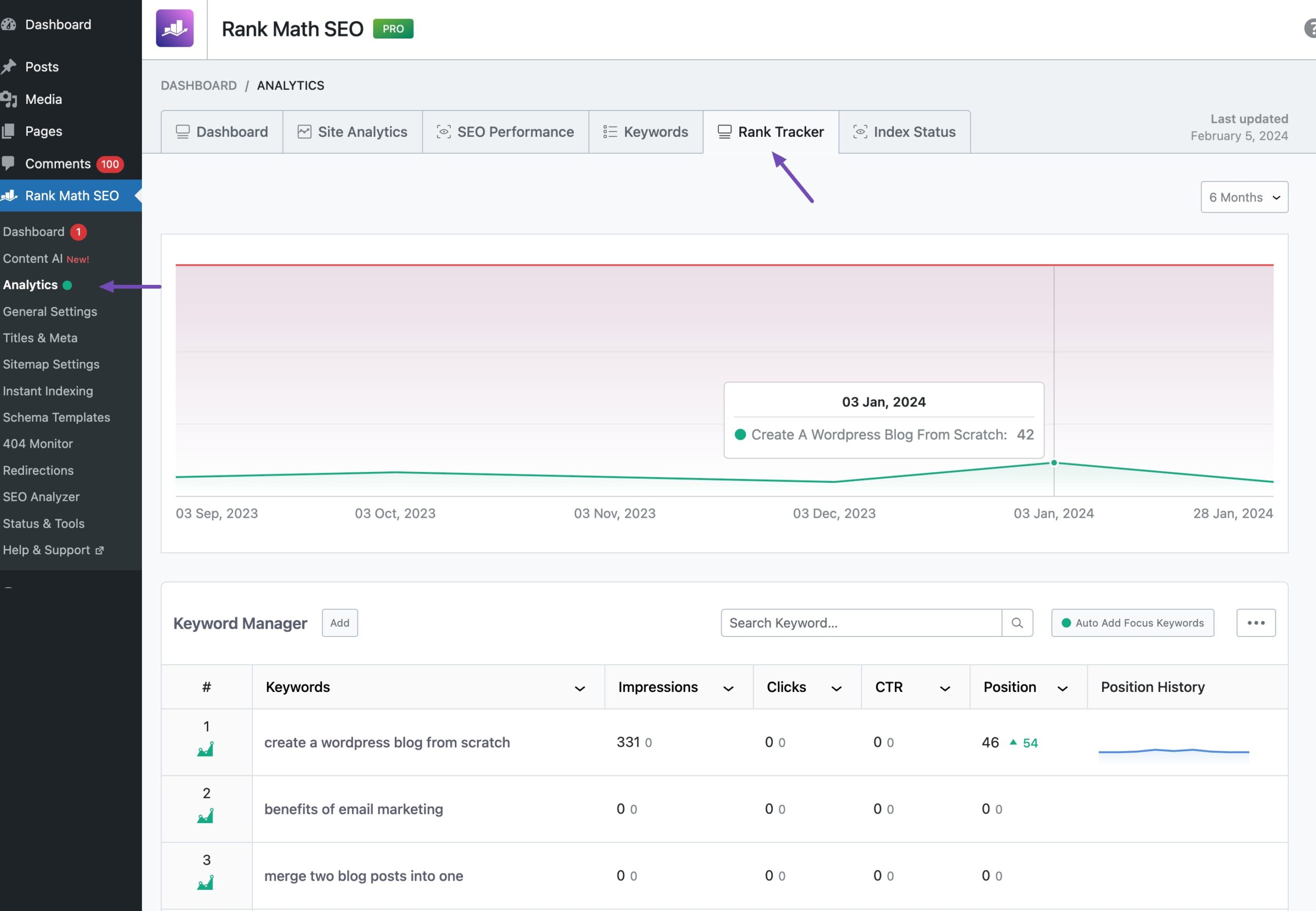
You can manually add any keywords you want to monitor. Alternatively, use the Auto Add Focus Keywords feature to automatically import focus keywords from your existing posts.

Once a keyword is added, Rank Math pulls data from Google Search Console and Analytics to provide insights such as:
- Impressions
- Clicks
- Click-through rate (CTR)
- Average position
- Position history over time
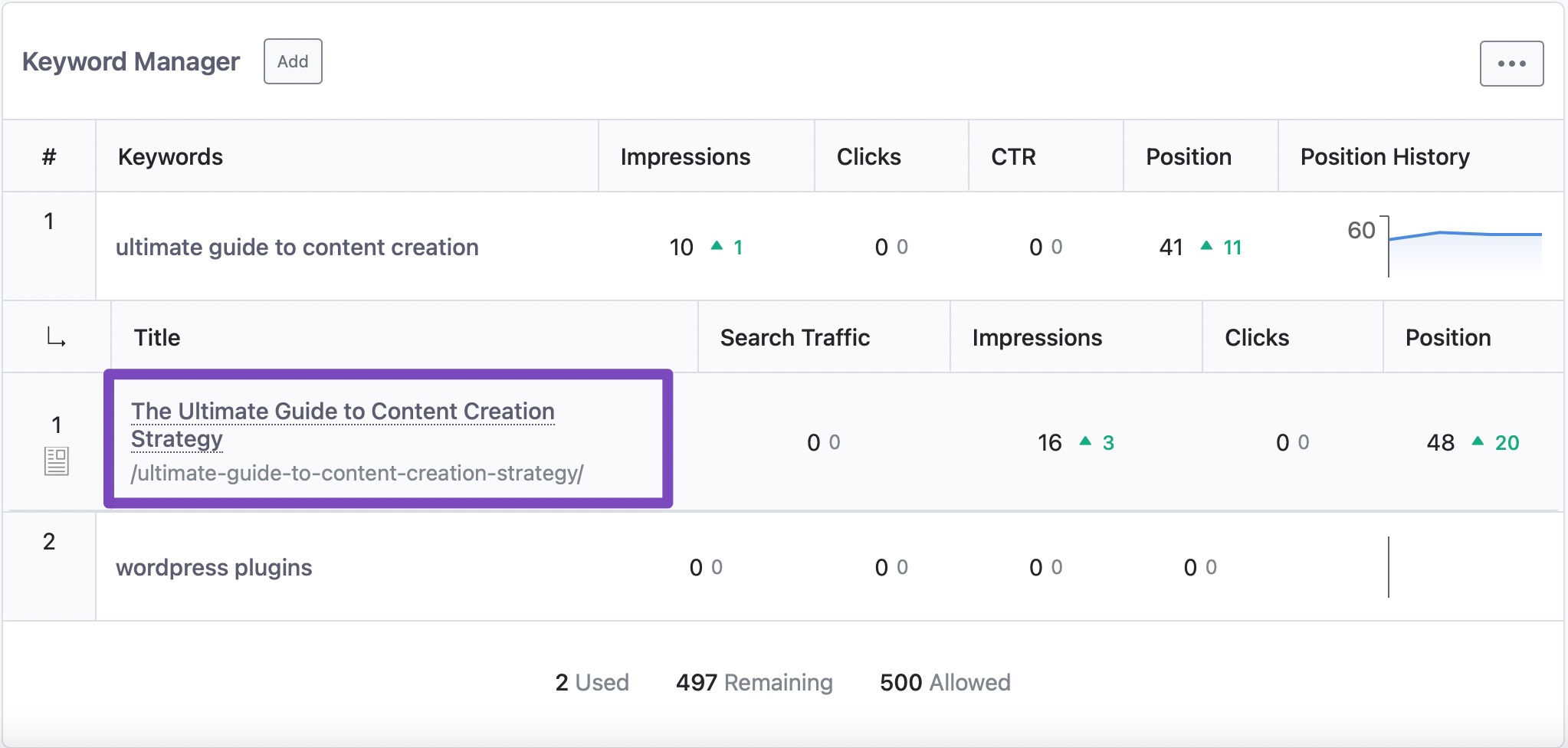
Click on any keyword to see historical performance graphs, showing ranking fluctuations and patterns. These insights help you make data-driven SEO decisions and adjust your strategy for better results.
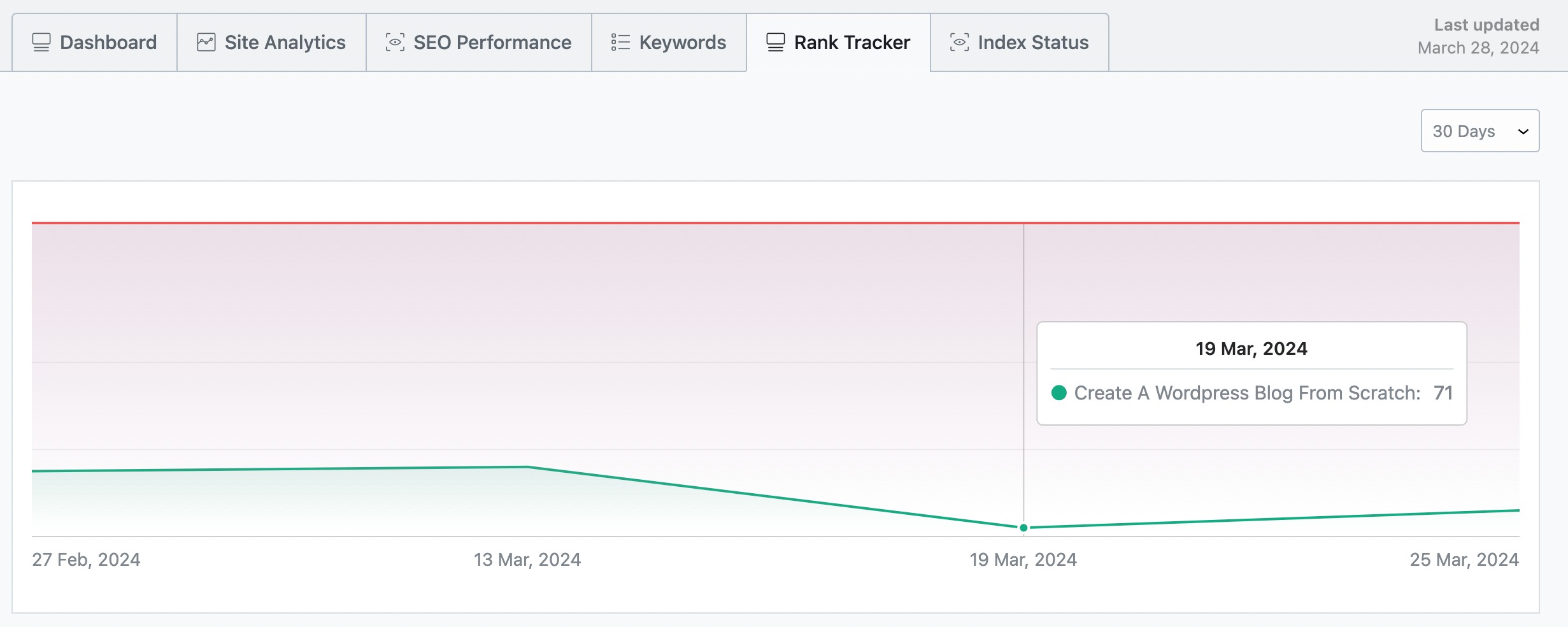
4 Conclusion
If you’re serious about growing your site’s visibility and driving more traffic, keyword monitoring isn’t just a nice-to-have; it’s a must.
Tracking how your keywords perform gives you clarity on what’s working, what needs improvement, and where new opportunities lie.
Thankfully, you don’t have to do it all manually. With Rank Math’s Rank Tracker, built-in Analytics, and the handy Top 5 Winning & Losing Posts feature, keeping tabs on your keywords becomes effortless, right inside your WordPress dashboard.
If you like this post, let us know by tweeting @rankmathseo.
